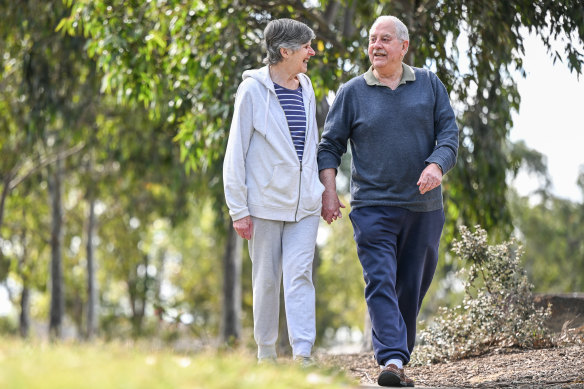Twenty years on, David wishes he’d used his first heart attack as a wake-up call
New research led by the Baker Heart and Diabetes Institute sought to understand whether digital rehab programs – where people can participate anytime, anywhere – might be the answer to changing these low participation rates.
“Cardiac rehab programs have been around for decades… But what existed has been declining in uptake and participation rates. The percentage of people that do it is appalling. Is it because they’re an outmoded way of delivering it?” wondered Associate Professor Melinda Carrington, senior author of the paper and head of the Baker Institute’s Pre-Clinical Disease and Prevention unit.
So, for the study, Carrington and her colleagues evaluated 18 global studies between 2007 (when the first iPhone came out) and 2021, comparing traditional face-to-face programs with digital health programs involving mobile apps, SMS, video or phone conferencing. Some digital programs also involve in-person sessions.
They found a 32 per cent reduction in the relative risk of re-hospitalisation for any cause and a 45 per cent relative risk reduction in cardiovascular-related re-hospitalisations among those who used the digital programs compared with the traditional programs.
Carrington stresses that the findings aren’t suggesting that digital programs are superior. The outcomes may be more favourable simply because more people actually completed the digital programs. Previous research has suggested that only about 41 per cent of people who start a cardiac rehab program complete it.
“We need support programs to empower people to take charge of their heart disease recovery journey,” says Natalie Raffoul, Heart Foundation Healthcare Programs Manager, who was not involved with the study. She adds that, in 2024, the foundation’s My Heart My Life program will include a digital component offering “ultra-personalised” information and support.

David Brown, pictured with wife Patricia, has found the rehab program extremely helpful.Credit: Joe Armao
Newton, who was also not involved with the study, says that although cardiac rehab programs are typically free, the cost and convenience of getting to a rehabilitation centre (the Heart Foundation has a directory of the centres around Australia) is challenging for many patients.
“It is clear from the research that access is a major barrier to participation in cardiac rehab,” he says. “There is also a nationwide shortage of accredited exercise physiologists or appropriately qualified physiotherapists to assess, deliver and monitor the cardiac rehabilitation.”
For these reasons, he says: “Telehealth delivery of exercise medicine is increasingly demonstrating huge potential to address the chronic disease epidemic facing Australia.”
Brown found the six-week program he completed was helpful on a variety of levels. Each day, he entered his blood sugar levels, blood pressure and weight into the app, and was prompted to walk for 15 to 30 minutes.
Loading
He was also able to track what medications he was taking and when. “Half the time you can’t remember what you’re taking, and they change the names of medications,” he explains. “With this, I had a full record of all the medication I was taking and the amount. That was very helpful.”
Twice-weekly supervised gym sessions were hard to start with but, slowly, Brown found he was breathing better and doing the exercises with less effort.
“One of my goals was to walk around the shopping centre with my wife without puffing and panting and stopping every five minutes for a break,” says Brown, who has since purchased a step device and weights he uses at home. “We can go wandering now – it’s a remarkable change to what I was six weeks prior.”
Had Brown been doing this since his first heart attack, he may not have had to have the second stent put in, he suspects. “It has benefited me so much.”
Make the most of your health, relationships, fitness and nutrition with our Live Well newsletter. Get it in your inbox every Monday.
For all the latest Life Style News Click Here
For the latest news and updates, follow us on Google News.
